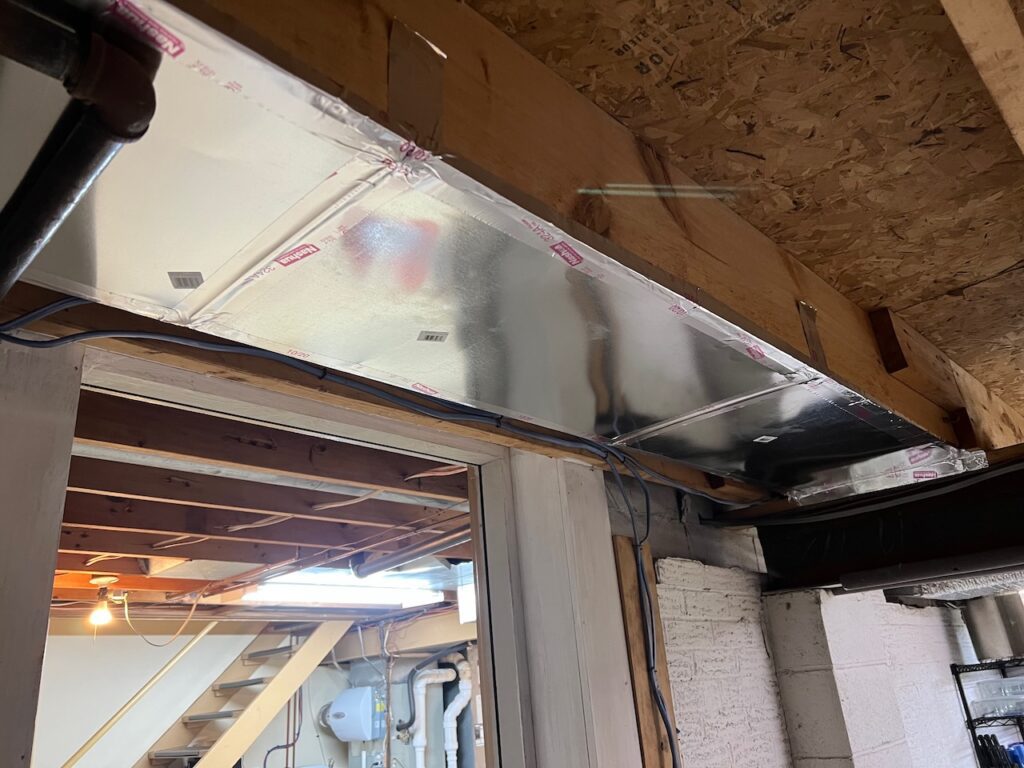Understanding the Three Major Types of Ducting

The role of ductwork in HVAC systems is as central as the heart in our bodies, pumping conditioned air throughout residential settings. This detailed guide sifts through the diverse landscape of ducting, showcasing the characteristics of flexible, rigid, and semi-rigid types of ducts. Acquiring knowledge about these types of ducting aids homeowners and professionals in making judicious decisions for the installation and maintenance of their HVAC systems.
Flexible Ductwork
Flexible ductwork, the contortionist of the HVAC realm, offers versatility and ease of installation, winning the hearts of homeowners. Crafted with a steel wire helix swathed in pliable plastic, flexible ductwork maneuvers around obstacles with the agility of a gymnast, easing installation even in tight corners like attics or crawl spaces.
The materials employed, such as steel wire helix and flexible plastic, offer longevity and insulation. This contributes to a better atmosphere within your home by curtailing mold, rust, and airborne particles. However, caution is needed during installation to evade excessive bending and kinking that can impede airflow.
Flexible ductwork thrives in hard-to-reach areas and excels in linking air supply outlets in rooms that are off the beaten path. With flexibility at its core, this type of ductwork is a strong contender in residential HVAC installations.
Rigid Ductwork
Rigid ductwork stands as a bastion of dependability and strength in the world of HVAC systems. Unyielding and constant in its shape, rigid ductwork assures optimal airflow. Now, let’s traverse through the different types of HVAC ducts under the umbrella of rigid ductwork:
Sheet Metal Ducts:
Sheet metal ducts, the stalwarts crafted from galvanized steel or lightweight aluminum, promise durability and longevity. They are champions in general ventilation and air distribution throughout homes. Their resistance to mold makes them an excellent candidate for promoting a healthy indoor environment.
Fiberglass Lined Ducts:
Fiberglass lined ducts pair sheet metal with a fiberglass lining, offering superior insulation and noise-reduction properties. These types of duct insulation are preferred for areas where a quieter environment is desired. However, over time, fiberglass can deteriorate, releasing fibers into the air, which necessitates regular cleaning.
Fiberboard Ducts:
Fiberboard ducts, composed of compressed fiberglass strands fused with resin and armored with a foil laminate sheet for moisture protection, have their strengths in insulation. However, they are not favored for ventilation purposes due to their rough surfaces affecting airflow efficiency and their propensity for promoting mold growth.
Gaining insights into each type of rigid ductwork equips homeowners with the information needed to navigate the world of HVAC systems effectively. From general ventilation to noise reduction, rigid ducts offer reliable airflow, contributing to a comfortable living environment.
Semi-rigid Ductwork
Semi-rigid ductwork strikes a balance between flexibility and rigidity, providing a sturdy structure with a bit of give. This equilibrium assures a ventilation system with zero leakage, thus ensuring efficient and effective airflow throughout your home. In addition, many semi-rigid duct systems are fitted with anti-bacterial and anti-static linings, easing maintenance and fostering a cleaner indoor environment.
In residential applications, semi-rigid ductwork shines in whole-home ventilation systems like Mechanical Ventilation with Heat Recovery (MVHR) units. It ensures an even flow of air and ventilation throughout the home, fostering a healthy and comfortable living environment.
Choosing the Right Ducting
When choosing the right types of ducting for your furnace system, consider the available installation space and the specific needs of your home. Ensure the ducting fits well within the allocated space and can be installed without impeding its functionality or accessibility.
System pressure and airflow requirements are essential when selecting the types of ducting. The ducting should be capable of handling the required air volume and pressure of your HVAC system, ensuring optimal airflow and a comfortable indoor environment.
Prioritize indoor air quality and mold prevention when selecting the types of AC ducts. Opt for ducting materials that resist mold growth and promote clean air circulation. This helps to maintain a healthy living environment, preventing respiratory issues, and minimizing the presence of allergens or pollutants in the air.
Consider efficiency and energy consumption when choosing the types of ducting. Choose ducting designed for optimal energy efficiency, which can help reduce utility costs and contribute to a more environmentally friendly home.
Maintenance and Cleaning Considerations
Proper maintenance and routine cleaning are fundamental for the peak performance of your ducting system. Regular maintenance helps to identify and address any issues promptly, ensuring efficient airflow, and preventing potential problems. Cleaning removes dust, debris, and contaminants, improving indoor air quality, and preventing allergen or pollutant buildup.
Conclusion
Understanding the three types of ducting – flexible, rigid, and semi-rigid – is essential when selecting the appropriate ducting for your residential HVAC system. Factors such as space requirements, system pressure, indoor air quality, energy efficiency, and maintenance should guide your decision-making process. By choosing the right ducting and making maintenance a priority, you ensure optimal HVAC system performance, energy efficiency, and a healthier home environment.




